 Here is how to tell if it’s a regular market pullback versus a serious bearish correction. I strongly disagree with those that claim market timing is toxic. Review this sample of eight of my charts. These types of tools have helped me side-step all the major corrections over the past 25 years. Focus on reviewing these charts at the major turns. You’ll see that you, too, can effectively separate a pullback from a correction.
Here is how to tell if it’s a regular market pullback versus a serious bearish correction. I strongly disagree with those that claim market timing is toxic. Review this sample of eight of my charts. These types of tools have helped me side-step all the major corrections over the past 25 years. Focus on reviewing these charts at the major turns. You’ll see that you, too, can effectively separate a pullback from a correction.
At the risk of boring the thousands of subscribers who have already downloaded our Tensile Trading ChartPack and are familiar with these tools, I hope you’ll forgive me and let me indulge in a simple review. For those who have yet to download the ChartPack, go here.
The first caveat is that these eight charts come from six different ChartLists. It’s the systematic routine of stepping through each of the ChartLists in an orderly sequential fashion that results in a clear verdict on the market move being either a pullback or a correction. These eight sample charts alone do not render a verdict, but merely give a glimpse into the process.
TREND (from ChartList 10.1 – Permission to Buy – TREND)
At the most basic level, a market can only exist in one of 3 states. An uptrend, sideways trading or a downtrend. Depending on your own personal investing timeframe, use the moving averages to render a decision on which of the three presently exists.
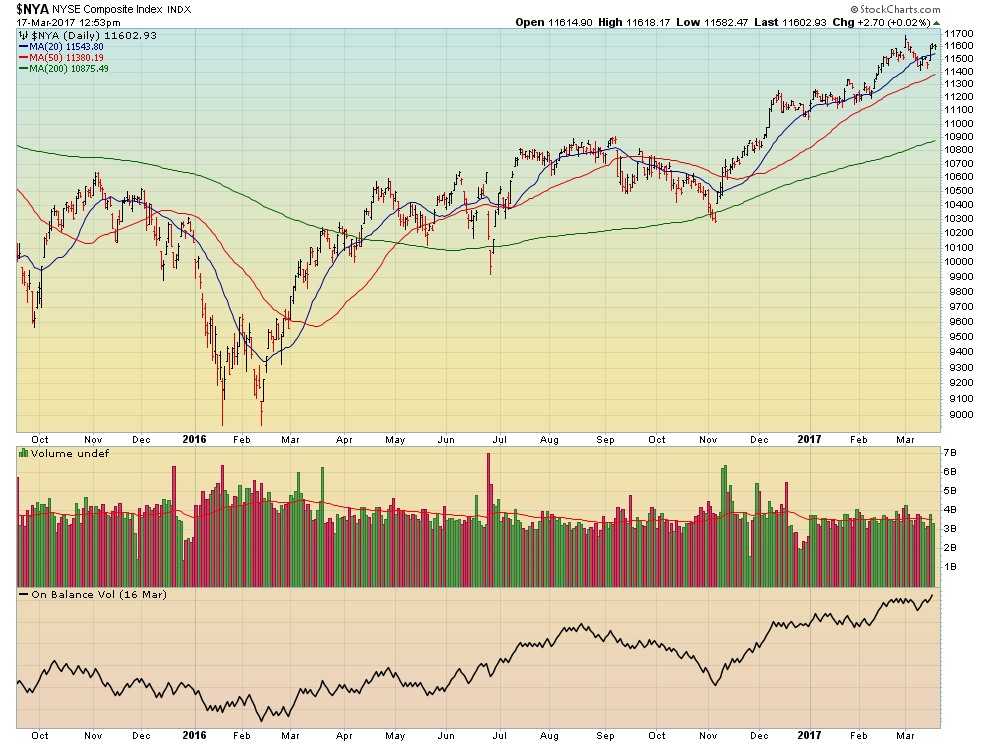 BREADTH (from ChartList 10.3 – Permission to Buy – Breadth)
BREADTH (from ChartList 10.3 – Permission to Buy – Breadth)
This tool shows us the NYSE and new highs minus new lows. Change the period (number of years) to gain insights into its behavior in past corrections.
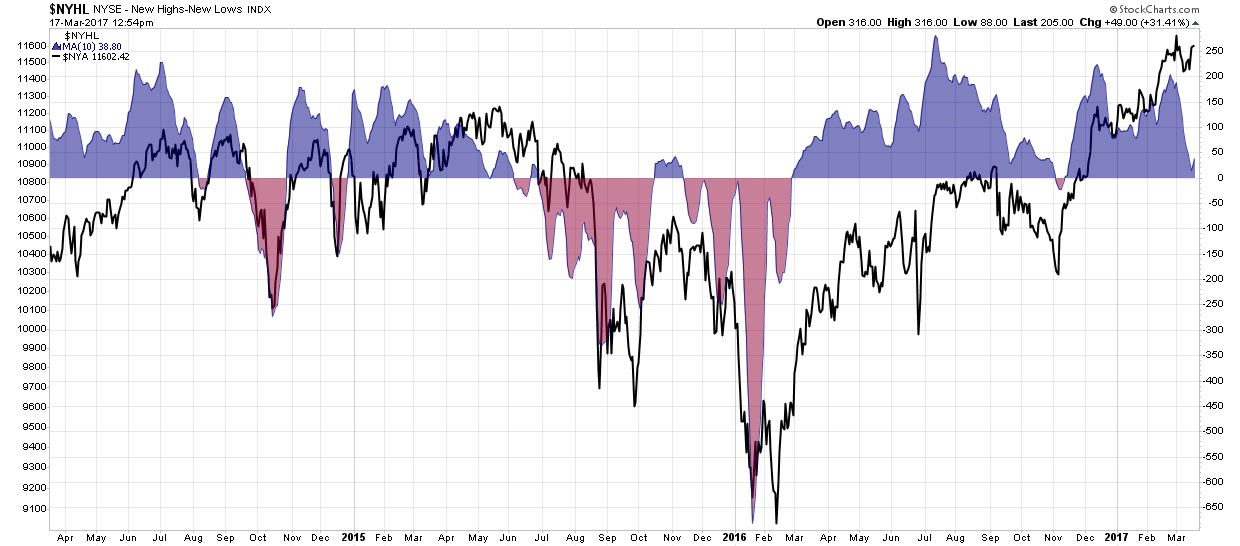 UNEMPLOYMENT (from ChartList 10.4 – Permission to Sell Dashboard)
UNEMPLOYMENT (from ChartList 10.4 – Permission to Sell Dashboard)
I could make a case that this is a leading indicator (not a co-incident indicator). Draw a trendline on the unemployment rate. When the downtrend breaks and begins to move up, you needed to take note as historically this precedes a market correction.
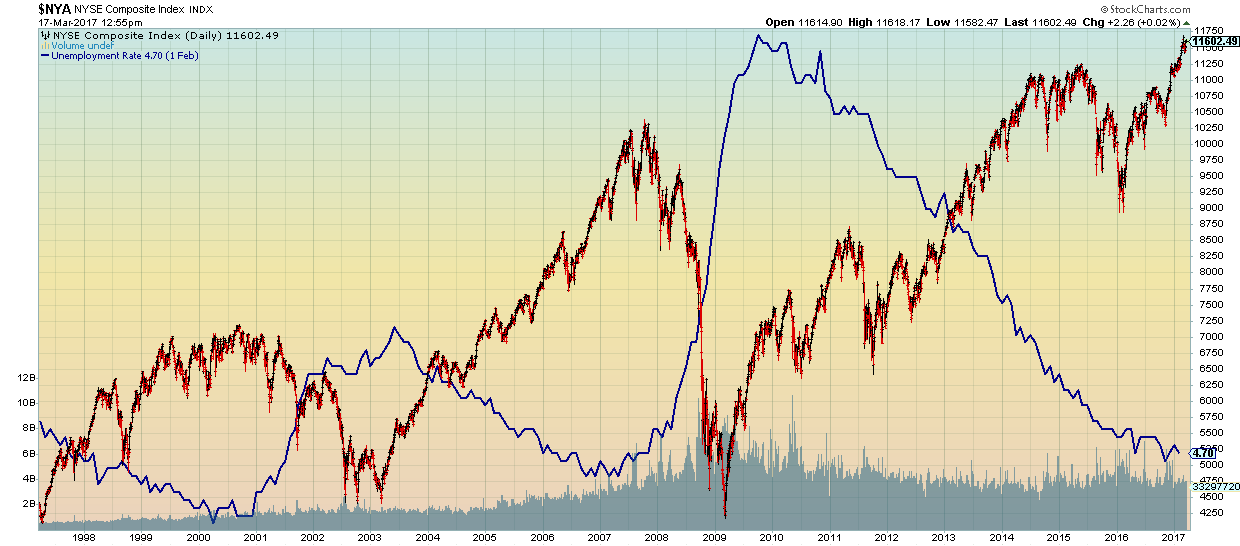 LEADING INDUSTRIES INDICATOR (from ChartList 10.4 – Permission to Sell Dashboard)
LEADING INDUSTRIES INDICATOR (from ChartList 10.4 – Permission to Sell Dashboard)
Stop and consider what you are looking at – a 10-year chart of three industries which are hyper-sensitive to present economic conditions. Hotels and occupancy rates reflect the health of our economy on a daily basis. Telecom usage as well. Entertainment expenditures too. Zoom in and look at the past two months. Presently, these hyper-sensitive industries have outperformed the NYSE by roughly 100%.
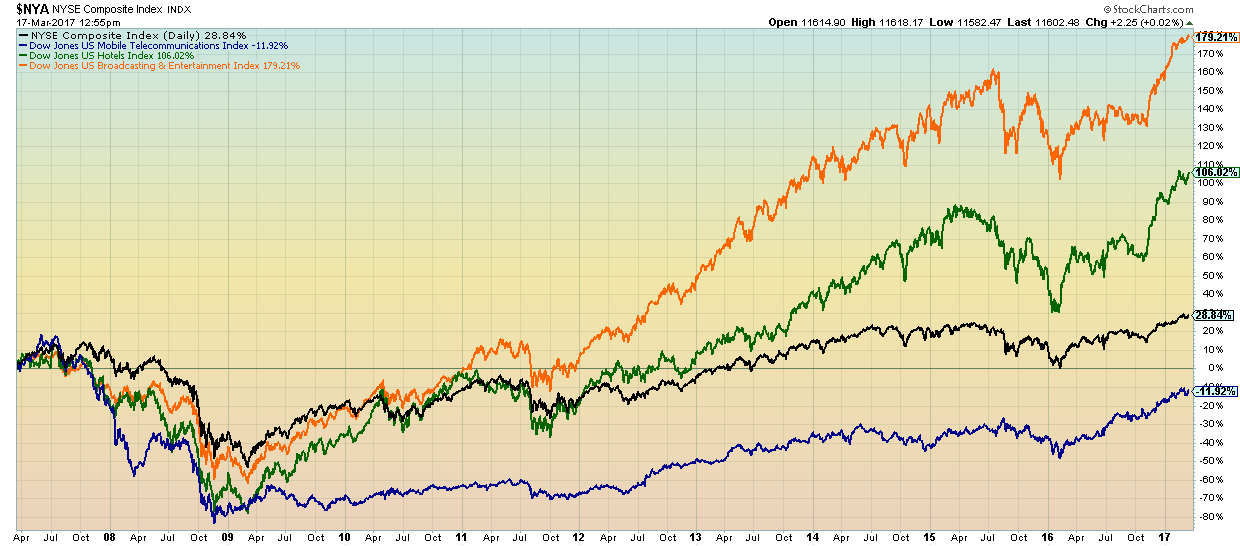 INDUSTRIAL PRODUCTION (from ChartList 10.4 – Permission to Sell Dashboard)
INDUSTRIAL PRODUCTION (from ChartList 10.4 – Permission to Sell Dashboard)
This 20-year chart is similar to unemployment in that trend changes here should be noted. Due to the laggard nature of the data, look for confirmations and divergences between the markets trend and industrial production trend.
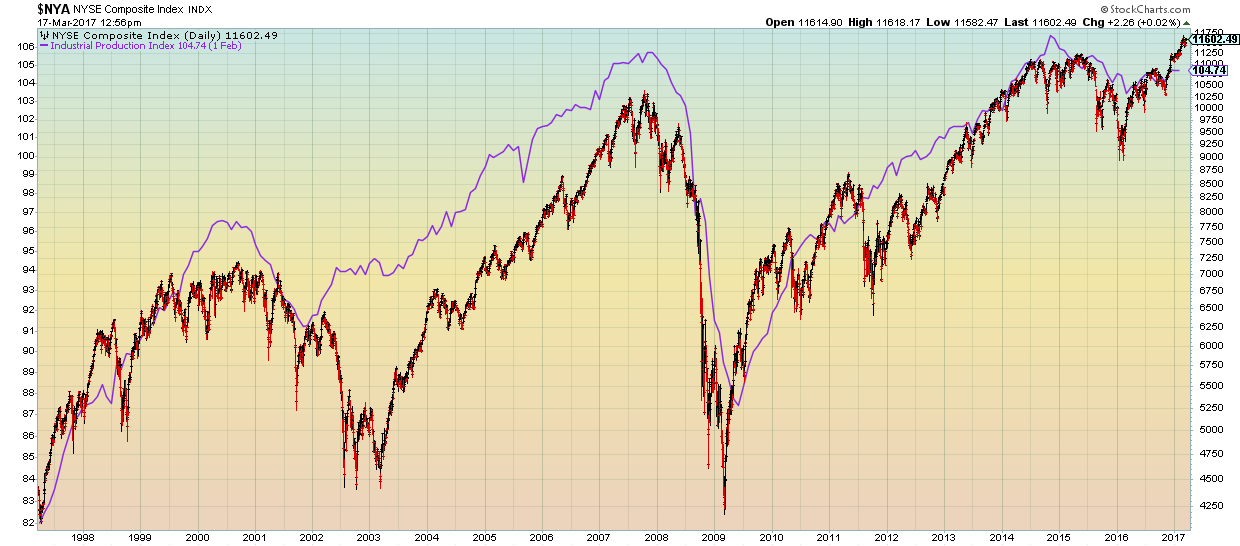 S&P 500 EARNINGS (from ChartList 10.5 – SuperList)
S&P 500 EARNINGS (from ChartList 10.5 – SuperList)
It is a fact that earnings drive the market. Depending upon your subscription level, this is a sensational chart to push out to 30 years. Then zoom in to the past year. The conclusions are undeniable. When earnings increase, the markets increase. When earnings decrease, the markets decrease. Since September 2016, the earnings have been increasing.
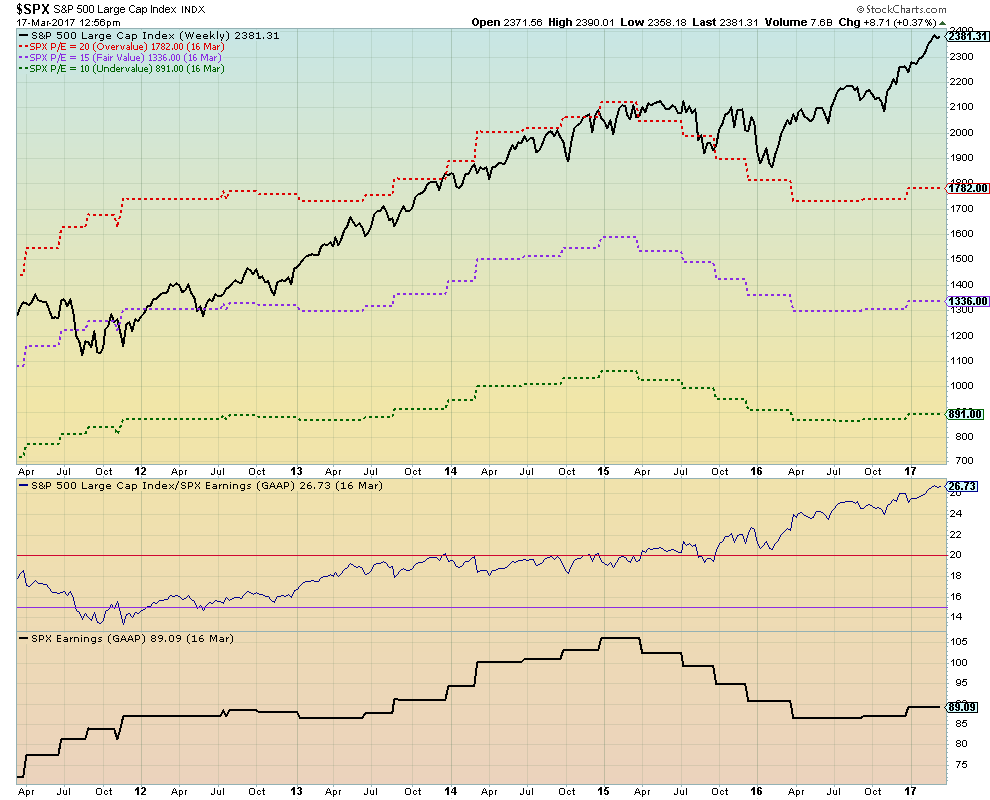 HISTORICAL MARKET TOPS (from ChartList 10.45 – Market Tops & Bottoms)
HISTORICAL MARKET TOPS (from ChartList 10.45 – Market Tops & Bottoms)
Market tops differ but the price patterns rhyme. When you review past market tops, a number of recurring bearish signals can be seen. Review the expansion of the Average True Range (ATR) and On Balance Volume. To aid in your analysis, I suggest you try the “inspect” tool (just under the box where you enter the ticker symbol). The vertical and horizontal cross hairs aid in producing useful insights.
 HOUSING STARTS (from ChartList 10.5 – Superlist)
HOUSING STARTS (from ChartList 10.5 – Superlist)
This 20-year chart strongly suggests that housing starts (black line) is a leading indicator versus the S&P 500 (green line). In both the corrections of 1999-2000 as well as 2008, it broke trend prior to the market.
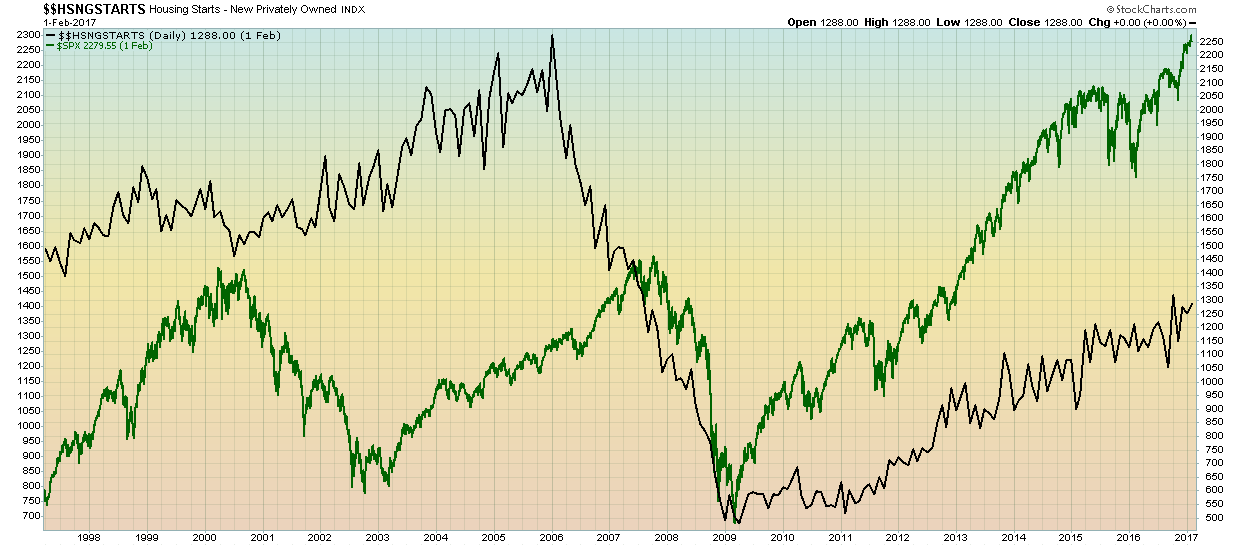 The bottom line is that the collection of market timing tools that we have assembled in the ChartPack (with the many suggestions of our user community) allows investors to build an unusually accurate mosaic of the stock market with which they are able to render a powerful “go” or “no go” verdict based on present market realities and not hyped-up news reports.
The bottom line is that the collection of market timing tools that we have assembled in the ChartPack (with the many suggestions of our user community) allows investors to build an unusually accurate mosaic of the stock market with which they are able to render a powerful “go” or “no go” verdict based on present market realities and not hyped-up news reports.
Trade well; trade with discipline!
- Gatis Roze, MBA, CMT
- Author, Tensile Trading: The 10 Essential Stages of Stock Market Mastery (Wiley, 2016)
- Presenter of the best-selling Tensile Trading DVD seminar
- Presenter of How to Master Your Asset Allocation Profile DVD seminar
- Developer of the StockCharts.com Tensile Trading ChartPack






